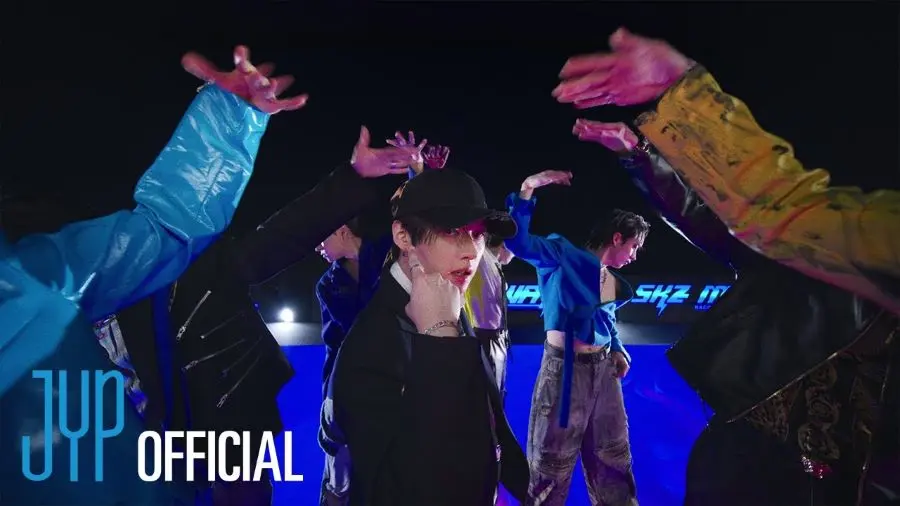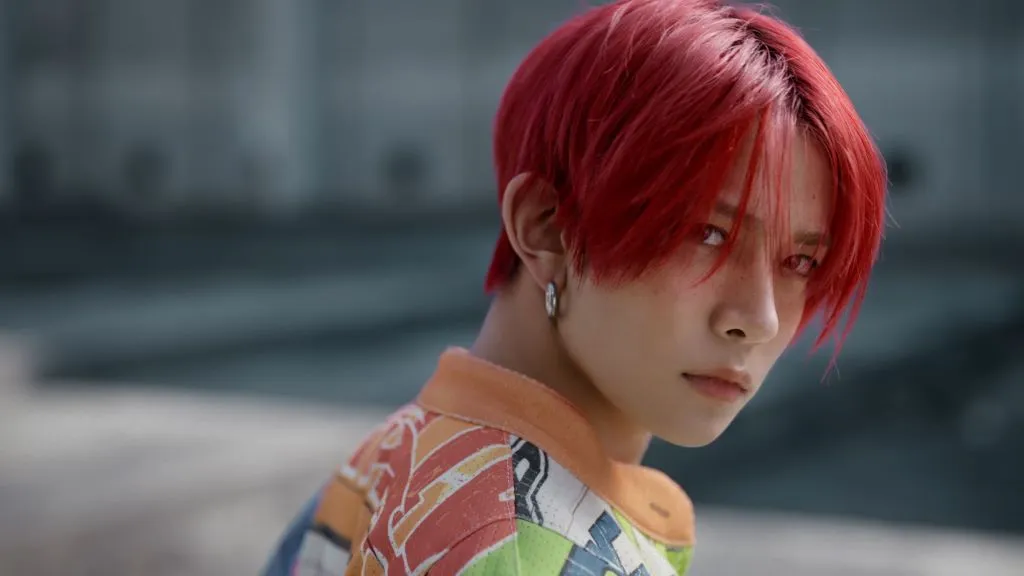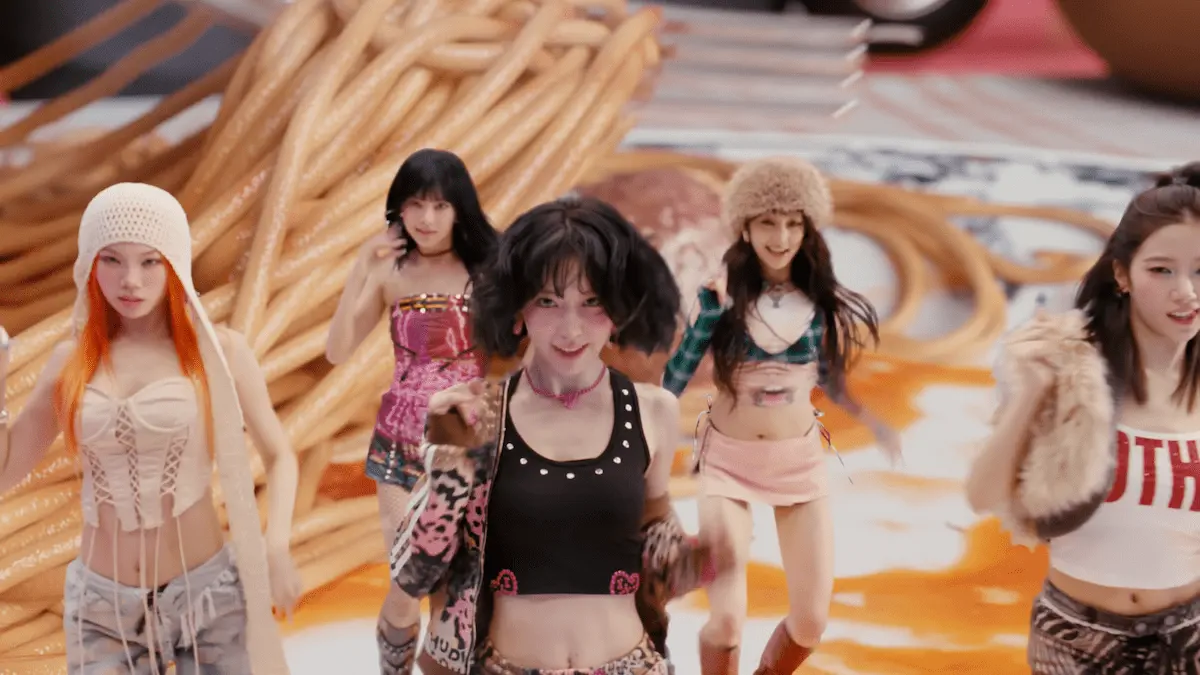Stray Kids 'CEREMONY' MV Explained: They Finally Made It—And They Want You to Know It
Okay, real talk—I’ve watched this MV about 15 times now (yes, I counted), and it still gives me chills. After grinding through an 11-month world tour, Stray Kids dropped “CEREMONY” like they had something to prove. And honestly? They proved it. This isn’t just a comeback music video. This is a full-blown visual manifesto that screams, “We earned this, and we’re not apologizing for it.”
Let me walk you through what’s really happening here, because there’s way more going on than just Han’s addictive “Kiss Muah” moment (though yeah, that part lives in my head rent-free now 🫠).

Source: Stray Kids Official YouTube (© JYP Entertainment)
Quick Navigation
First Impressions: What Hit Me Immediately
The first time I hit play, I was expecting a standard victory lap vibe—you know, the usual “we won, look at us” formula. But within the first 30 seconds, I realized this was something else entirely.
Bang Chan in that red enamel coat at 0:55? That’s not just styling—that’s a statement. He’s conducting this whole thing like a drum major leading a championship parade, and the confidence is almost uncomfortable to watch. It’s the kind of energy you can only have when you’ve actually earned your spot at the top.
What really got me though was the opening at 0:07. All those trophies aren’t just props—look closer and you’ll notice the varying heights, the strategic placement, and that deliberate empty space in the center. I had to pause it because it hit me: this is what winning looks like when you’re the only one playing your game. It’s victorious, sure, but there’s also this weird isolation to it. They’re surrounded by proof of success but standing alone. That visual metaphor is chef’s kiss.
Credits & Context
Before we dive deeper, here’s what you need to know:
Artist: Stray Kids
Song: “CEREMONY”
Album: KARMA
Release: August 22, 2025
Agency: JYP Entertainment
Director: Seong Won-mo
Written by: 3RACHA (Bang Chan, Changbin, Han)
Composed by: 3RACHA, Versachoi
Context matters here: this dropped after they just finished touring 40+ cities over 11 months. They also made history by becoming the first group to debut their first 7 albums at #1 on Billboard 200. So when the lyrics say “no one nobody can stop me,” it’s not posturing—it’s documentation.
Visual Breakdown: The Story They’re Telling
The Stadium as a Metaphor
The massive stadium setting isn’t subtle, and it’s not supposed to be. Director Seong Won-mo went for maximum scale here, and for good reason. At 0:33, you can see the STAY card section doing a wave—left to right, fluid and synchronized. I replayed this part probably five times because the symbolism clicked: this ceremony isn’t happening for fans, it’s happening with them. It’s a shared ritual.
But here’s where it gets interesting. Despite all the crowd energy and grandeur, the most important battles in this MV happen one-on-one.
The Tennis Match: Fighting Yourself
Around 1:30, we get into what I think is the centerpiece of the entire video—the tennis match between two versions of I.N. First watch, I thought it was just a cool visual. Third watch, I realized it’s the whole point.
They’re not playing against an opponent. They’re playing against themselves. And the ball? It’s got the SKZ Taegeuk logo on it—literally their core identity being volleyed back and forth. At 1:45, when they clash mid-air and that logo spins counter-clockwise, I actually got goosebumps. It’s not just stylish—it’s showing that they’re actively turning chaos into order, discord into harmony.
The real competition was never with other groups. It was with their own standards, their own previous work, their own limits. That’s what makes them different.
Felix’s Weight of Glory
Can we talk about Felix at 0:15 for a second? The way he’s staring at that small object in his hand—the intensity in his eyes isn’t celebration, it’s burden. That’s the look of someone who knows that once you reach the top, the hardest part is staying there. Every win becomes something you have to defend. Every achievement becomes a baseline you have to exceed.
I’ve seen comments calling this “badass” and “fierce,” and yeah, it is. But it’s also exhausting just to watch. Which I think is intentional.
Lyrics Decoded: It’s Not Just Bragging
3RACHA (Bang Chan, Changbin, and Han) wrote these lyrics, and they’re way more layered than they sound on first listen.
The Karma Reclamation
Everyone’s been talking about the “karma” concept, but here’s what I found interesting: they’re using the Eastern philosophical definition of karma (업, 業) as “action” or “deed,” not the Western “what goes around comes around” version.
Listen to the verb structure in the lyrics—it’s all about what they did, not what happened to them. “We achieved this” not “this was given to us.” That’s a huge distinction. They’re reclaiming karma as an active tool, not a passive force.
When they say “this is our ceremony,” they’re not just celebrating success—they’re declaring ownership over it. We built this stage. We earned this moment. We decide what happens next.
The Survivalist Undertone
There’s this line that references being “thrown into the desert” but thriving anyway. That’s not metaphorical for them—that’s their actual story. Self-producing from day one, betting everything on their own vision when the industry told them to play it safe. The lyrics don’t dwell on this for pity points; they use it as proof of concept. We survived that, so what makes you think anything can stop us now?
The confidence isn’t arrogance when you have the receipts to back it up.
The Deeper Layers I Caught on Rewatch
Sound Design: Listen With Headphones
Put your headphones on and play it again. I’m serious—the production details are insane.
At 1:12, right before the bass drops, there’s this super quick inhale sample. It’s like that last breath before diving underwater or stepping into the ring. Versachoi and 3RACHA layered that in deliberately to create tension. It’s a tiny detail that completely changes how the drop hits.
The bridge around 2:10 is where things get really interesting sonically. You’ve got this huge orchestral brass section—classic, triumphant, championship-level grandeur. But underneath it, there’s this rising electronic noise filter that sounds almost menacing. The blend of celebration and danger in the same moment? That’s the whole story. You can’t have one without the other.
Also, those hi-hats accelerating from 1/16 to 1/32 notes right before each chorus? That’s the musical equivalent of a final sprint. Your brain registers it as urgency even if you don’t consciously notice it.
Styling Choices That Actually Mean Something
Bang Chan’s red coat gets all the attention (rightfully), but check out 2:24—Hyunjin’s got the SKZ logo literally shaved into his hair. That flipped the script for me. Usually, people wear logos. Here, the logo is part of him. It’s not an accessory; it’s an identity that’s been internalized and embodied.
The color palette throughout the MV also shifts deliberately. Early scenes are high-contrast with dramatic shadows—very “battle” energy. But as it progresses, the lighting gets more golden and warm without losing its edge. It’s visual shorthand for “we fought to get here, and now we’re basking in it.”
Choreography as Military Precision
The dance formations in this aren’t trying to be intricate or show off technical footwork. They’re going for something else: disciplined power. At 1:02, when all eight members line up behind Bang Chan, it’s giving military procession more than dance crew. It’s organized, intentional, and kind of intimidating.
Every member moves with this unshakeable confidence that only comes from actually earning your spot. Hyunjin’s movements are sharp but fluid—controlled chaos. Felix’s presence is weighted, like every gesture costs something. These aren’t kids playing dress-up as champions. These are actual champions embodying what got them there.
Things You Might’ve Missed (Rewatch Homework)
Since I’ve already watched this way too many times, here are some specific things to look for on your next viewing:
The Logo Spin Count: That SKZ Taegeuk logo appears and rotates multiple times throughout the video. I counted at least 7 distinct appearances, but I might’ve missed some. See if you catch them all.
Bang Chan’s Coat Details: Count the gold stripes on his red coat. Is it 8 for the members? Or is there another SKZ number hidden there? The devil’s in the details with their visual branding.
Faker’s Entrance at 2:48: When Faker shows up (and yes, that’s the Faker—League of Legends GOAT), watch the eye contact he makes with the camera. Then compare it to the reverse shot from his perspective. The camera work is telling a story about mutual recognition between legends. It’s a silent co-sign from another undisputed #1.
The Empty Trophy Space: Go back to 0:07 and really look at the center of that trophy display. What’s supposed to go there? The next achievement? A physical representation of the journey itself? I have theories, but I’d love to hear yours.
Final Thoughts: Why This Hits Different
Here’s what I keep coming back to: this MV could’ve been a simple victory lap. They had every right to just flex and call it a day. Instead, they made something that acknowledges both the glory and the cost. The isolation at the top. The pressure to keep proving yourself. The internal battles that never show up on scoreboards.
From “Back Door” to “CEREMONY”: A Trilogy
If you’ve been following their visual narrative, this feels like the final chapter of a three-part arc:
- “Back Door”: We’re outsiders crashing the party. Let us in.
- “Chk Chk Boom”: We’re here, we’re explosive, and you can’t ignore us anymore.
- “CEREMONY”: We’re not attending the ceremony. We’re hosting it.
That evolution is wild to witness in real-time. They went from knocking on the door to owning the whole venue.
The STAY Connection
What gets me is how the MV actively rejects the “lonely at the top” narrative by making STAY an integral part of the ceremony. That card section wave at 0:33 isn’t decoration—it’s co-authorship. The ceremony doesn’t exist without the people who showed up to witness it.
I’ve seen some comments questioning whether this is too self-congratulatory, but honestly? After watching groups grind for years only to downplay their success with false humility, it’s refreshing to see artists own their achievements. They’re not saying they’re better than everyone. They’re saying they worked for this specific moment, and they’re going to celebrate it properly.
What This Means Going Forward
This isn’t an ending—it’s a declaration of a new era. The “KARMA” album era is them saying: we’ve proven ourselves, we’ve earned our spot, and now we’re operating from a position of established power rather than scrappy underdogs.
Does that mean the music will change? Probably not drastically. But the confidence behind it? That’s different. That’s elevated.
My take: “CEREMONY” is exactly what it needed to be—uncompromising, self-assured, and visually stunning. It’s proof that Stray Kids have evolved from artists trying to break through to artists defining what success looks like on their own terms.
What’s your favorite moment in the MV? Drop a timestamp in the comments—I’m genuinely curious what hit different for other people.
Q&A: Your Burning Questions
What exactly is "Karma Sports"?
"Karma Sports" is a fictional competition framework created for the MV. Think of it as a metaphorical sport where victory is determined purely by your actions and effort—your "karma" in the Eastern philosophical sense. It's basically saying: in our game, there's no luck, no shortcuts. You get exactly what you put in. It's a perfect metaphor for their self-producing model and DIY approach to K-pop.
Why did Faker make a cameo?
Faker appearing at 2:48 is genius-level symbolic casting. He's widely considered the greatest League of Legends player of all time—undisputed, multi-championship, changed-the-game level of GOAT status. Having him show up in your MV is essentially getting a co-sign from another undisputed #1 in their field. That "shushing" gesture he does? That's the ultimate flex: no words needed when your record speaks for itself. It's champions recognizing champions.
What does the SKZ Taegeuk logo represent?
The SKZ Taegeuk fuses their group letters with the Taegeuk symbol (similar to Yin-Yang)—representing balance within chaos. It's a perfect visual summary of their musical identity: taking aggressive, disparate sounds and forging them into cohesive harmony. It also connects their Korean roots to their global presence. When that logo spins counter-clockwise during the tennis clash at 1:45, it's literally showing chaos being brought into order through their actions.
How many music show wins did "CEREMONY" get?
As of the latest count, "CEREMONY" secured 6 music show wins, bringing Stray Kids to 43 total wins. They're the first and only 4th gen boy group to surpass 40 music show wins. The wins came from Inkigayo, Music Core, Music Bank, M Countdown, Show Champion, and one more—basically a clean sweep of the major shows.
Sources & Credits
Primary Sources:
- Stray Kids “CEREMONY” Official MV - YouTube
- Karma (Stray Kids album) - Wikipedia
- Stray Kids “CEREMONY” MV Teaser - Ize Magazine
Special Thanks: The STAY community whose genuine reactions and observations in the YouTube comments helped shape some of the insights in this analysis. The collective excitement is what makes K-pop worth covering.




Comments